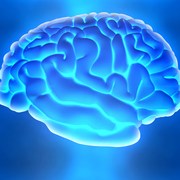For women under the age of 20, brain tumors are the second most common cause of cancer-related deaths. For women between the ages of 20 and 39, brain tumors are the fifth most common cause of cancer-related deaths, according to the American Brain Tumor Association.
Brain tumors, which consist of abnormal cells, can be benign or cancerous. Some brain tumors start in the brain (primary brain tumors), while others start from cancers elsewhere in the body.
The most common symptoms of a brain tumor include headaches, weakness that occurs in one part of the patient’s body, altered mental functions, and seizures, which MedlinePlus noted is more common in older patients.
But what about symptoms of brain tumors in women? Female patients can experience these symptoms, but they should also be aware of the specific symptoms of brain tumors that are more common in women.
Meningioma Symptoms
Meningiomas are the most common type of primary brain tumor, accounting for 34 percent of cases, according to the American Brain Tumor Association. This type of brain tumor affects the meninges — the membranes which cover the brain and the spinal cord.
Among middle-aged patients, women have a higher prevalence: in meningiomas of the brain, women have it three times more often than men; in meningiomas of the spinal cord, women have it six times more often than men, according to the Brigham and Women’s Hospital.
The symptoms of a meningioma depend on its location. For example, a meningioma on the spinal cord can cause back pain or pain in the limbs.
Meningiomas on the underside of the brain, called posterior fossa meningiomas, can compress the cranial nerves, resulting in symptoms such as sharp facial pain, hearing loss, facial muscle spasms, headaches and trouble walking.
If a patient has a sphenoid meningioma, which is located behind the eyes, she can have facial numbness and vision problems. If the meningioma is growing around the eye sockets, called an intraorbital meningioma, the patient can have bulging eyes from pressure and an increasing loss of vision.
With a convexity meningioma, which is toward the front on the surface of the brain, a patient can have seizures and headaches. An intraventricular meningioma, located in the ventricles of the brain, can cause dizziness and headaches.
A meningioma that grows along the nerve between the nose and brain, called an olfactory groove meningioma, can cause a loss of smell and vision problems. If a patient has a large parasagittal meningioma, she may have leg weakness that affects both of her legs.
Pituitary Tumor Symptoms
The American Brain Tumor Association stated that 13 percent of primary brain tumors are pituitary tumors, which affect pituitary gland. The pituitary gland’s major role is to regulate hormones in the body, such as thyroid-stimulating hormone, adrenocorticotropic hormone, growth hormone and prolactin. Women have a higher frequency of pituitary tumors.
The Brain Tumor Center from Massachusetts General Hospital and Harvard Medical School explained that an increased frequency of prolactinomas — a type of pituitary tumor involved in the production of prolactin — occurs in women in their 20s and 30s and that women are affected four times more often than men.
The symptoms of a prolactinoma depend on the level of prolactin affected. For example, in a patient with a small increase in prolactin, she may have irregular menstruation or stop menstruating. In cases in which a large increase of prolactin occurs, the patient can experience milk production in her breasts. Some patients have a reduced libido with a prolactinoma.
UCLA Neurosurgery pointed out that while large prolactinomas are rare in women, they can cause headaches, vision loss and hypopituitarism.
References
American Brain Tumor Association. Facts and Statistics, 2010. Web. 19 September 2011
http://www.abta.org/sitefiles/pdflibrary/ABTA-FactsandStatistics2010v3.pdf
MedlinePlus Medical Encyclopedia. Brain Tumor – Primary – Adults. Web. 19 September 2011
http://www.nlm.nih.gov/medlineplus/ency/article/007222.htm
Brigham and Women’s Hospital. Facts About Meningiomas. Web. 19 September 2011
http://www.brighamandwomens.org/Departments_and_Services/neurosurgery/Meningioma/Meningiomafacts.aspx
The Brain Tumor Center from Massachusetts General Hospital and Harvard Medical School. Neuro-Oncologic Diseases of Women. Web. 19 September 2011
http://brain.mgh.harvard.edu/WomensTumors.htm
Massachusetts General Hospital. Prolactinoma Resources. Web. 19 September 2011
http://pituitary.mgh.harvard.edu/Prolactinomas.htm
UCLA Neurosurgery. Prolactinoma. Web. 19 September 2011
http://neurosurgery.ucla.edu/body.cfm?id=1123&ref=86&action=detail
Reviewed September 19, 2011
by Michele Blacksberg RN
Edited by Jody Smith






Add a Comment1 Comments
I propose that studies need to be conducted to see whether injecting beta amyloid and tau protein (the substances that damage the brain in degenerative brain diseases like alzheimer's disease) can be put to use to kill brain tumors. If these natural toxic substances can damage the brain then it could potentially kill brain tumors.
July 26, 2018 - 9:48pmAdditionally, it would be important to study what effect estrogen has on brain tumors and maybe anti-estrogens could also have an impact.
P Movsessian
This Comment